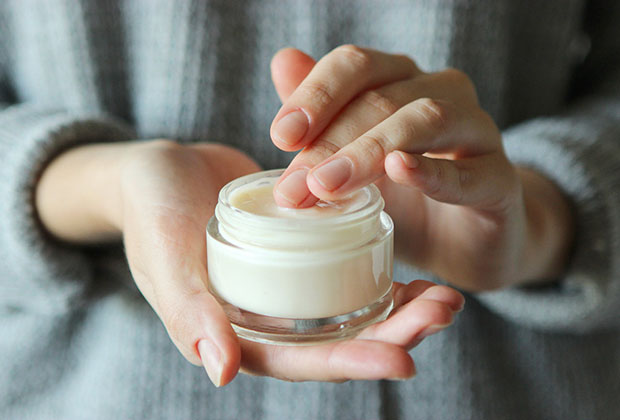Trisodium citrate is used in cosmetics and skin care products primarily to control the pH level of your product. It also helps to preserve the formulation and prevent the growth of bacteria and germs.
Sodium citrate is the sodium salt of citric acid, a weak organic acid found naturally in plants and animals, especially citrus fruits. In fact, citric acid is what gives citrus fruits their acidic taste.
Citric acid was first isolated in 1784 by the chemist Carl Wilhelm Schiele, who crystallized it from lemon juice.
While citric acid can be extracted from citrus fruits, more than 99% of the world’s produced citric acid is produced through microbial fermentation. Large-scale industrial production of citric acid is carried out through fungal fermentation of raw sugar reserves such as molasses by Aspergillus niger strains. Citrate salts are produced by the same fermentation process, but simply crystallize in the presence of suitable alkaline solutions.
Trisodium citrate helps manage the pH of formulations and allows for versatility in terms of other key ingredients that can be used. It also helps reduce microbial growth, thereby ensuring safer and longer lasting products.
On the other hand, sodium tricitrate does not cause any irritation or sensitivity when used in skin care and cosmetics.

What effect does trisodium citrate have on the skin and who is it suitable for?
All skin types are fine with trisodium citrate, except for those that are particularly sensitive to it. Also, this material works well in synergistic combinations with most materials.
In cosmetics and skin care products, trisodium citrate primarily acts as a buffering agent to control pH levels, but may also be used as a preservative.
Level (pH)
As a buffering agent, trisodium citrate acts to establish and maintain the pH of a product. If you remember from high school, pH stands for “potential hydrogen” and refers to the level of acidity or alkalinity of a solution.
The pH scale ranges from 0 to 14. A pH of 7 is neutral, while a pH less than 7 is acidic and a pH greater than 7 is basic or alkaline. Trisodium citrate can buffer solutions in the pH range of about 3 to 6.2. A buffer refers to a slight change in pH.
The skin’s natural pH is slightly acidic, usually between 4.75 and 5.5. This acidity of the skin is called “acid coating” and it is maintained by the sebaceous glands, sweat glands and natural flora of the skin.
The acid coating provides a layer of amino acids, lactic and oils that effectively protects the skin against environmental factors such as allergens, pollutants and bacteria. These environmental factors can contribute to conditions such as sensitive skin, acne and even signs of aging.
There are many factors that can disrupt the delicate balance of the skin’s acid mantle, both internally and externally. As we age, our skin becomes more acidic in response to lifestyle and environment.
Anything that comes into contact with our skin, such as cosmetics, sun, water, pollution, etc. can contribute to the breakdown of the acid mantle. Ultimately, this interferes with the skin’s ability to protect itself.
The pH balance of cosmetics and skin care products is very important to maintain the skin’s natural pH as much as possible. If a product is too acidic, it may irritate the skin or cause a burning sensation. However, if a product is too alkaline, it will strip your skin of vital, natural oils.
Skin that is too alkaline can be more prone to acne because a certain level of acidity is needed to inhibit bacterial growth.
Additionally, a disrupted acid mantle can inhibit the absorption of topical skin care products. By using an ingredient like sodium tricitrate, cosmetic manufacturers can adjust the pH of their formulation, resulting in a better product for the skin.

Is trisodium citrate herbal?
Trisodium citrate is a plant substance. It is usually prepared synthetically or from plant sources. If you are looking for a herbal product, it is best to make sure that the other ingredients in the formulation are also herbal.
The Keeper
In addition to acting as a buffering agent, trisodium citrate is used as a preservative. The use of preservatives in most products is necessary to prevent degradation caused by microorganisms and to protect the product from unwanted contamination during use.
Microbial contamination of products, especially those used around the eyes and on the skin, can lead to problems such as skin irritation and infection. Preservatives such as trisodium citrate help prevent such problems.
Possible Risks
In 2014, the Cosmetic Ingredient Review Expert Panel reviewed the scientific literature and data on the safety of citric acid and its esters and salts, including trisodium citrate. The Cosmetic Ingredient Review Panel is a group responsible for independently evaluating the safety and efficacy of skin care and cosmetic products.
Their data showed that in concentrations used in cosmetics and skin care products, citric acid and its esters and salts were not eye irritants and did not cause skin irritation or allergic skin reactions.
Therefore, the expert group concluded that available scientific data indicate that citric acid and its esters and salts are safe for use in cosmetics and personal care products under current conditions.
To buy trisodium citrate or to know the price of trisodium citrate , contact the experts of the collection through our contact us page.
Related Articles:
